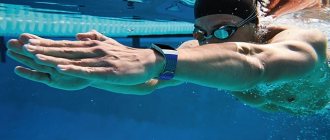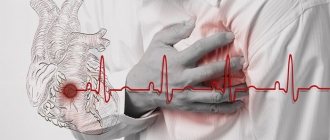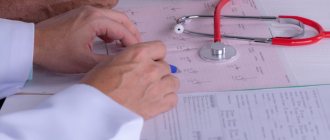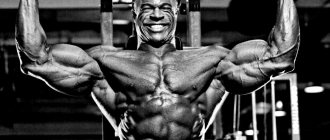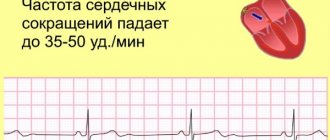Pain Treatment Center
Alekseeva
Oksana Alexandrovna
23 years of experience
Doctor, highest qualification category, member of the European Association of Neurologists, Russian Interregional Society for the Study of Pain (ROIB), Association of Interdisciplinary Medicine. Has experience working in hospital and outpatient services. He has seven published works on neurology.
Make an appointment
In ensuring the normal functioning of the human body, one of the key positions is occupied by the autonomic nervous system (ANS) - a complex of nervous structures responsible for maintaining a constant internal environment (homeostasis). The efforts of the ANS regulate the functioning of the circulatory and lymphatic systems, internal organs, and endocrine glands. The ANS itself is part of the nervous system (NS), but has an important feature - autonomy, that is, a person cannot control it with his own will.
Various disorders in the functioning of the ANS are called vegetative-vascular dystonia (VSD). This term does not mean a separate disease itself, but a syndrome - a condition caused by diseases of certain organs and systems (mental or somatic pathologies, hormonal imbalances).
Main symptoms and signs
The manifestations of VSD are diverse; the general list includes over several dozen items, but patients experience only a few of them (usually from 5 to 20) in different combinations. An important point: with VSD, there is a combination of several symptoms that appear simultaneously, but in the complete absence of organic disorders. A separate manifestation of any of these signs is not a reason for diagnosing vegetative-vascular dystonia, since it usually indicates a specific pathology.
Doctors distinguish several forms of VSD, classifying them on the basis of identifying relatively typical sets of symptoms that resemble the course of certain pathologies of organs or systems.
Respiratory form of VSD
Respiratory vegetative-vascular dystonia is the most common. The patient complains of the inability to take a deep breath, is afraid of suffocating, gasps for air, feels soreness, tightness in the throat, heaviness or pain in the chest, and coughs frequently.
Tachycardial form
Complaints of rapid heartbeat (tachycardia), irregular heart rhythm, sensation of vascular pulsation and heat in the temples and neck. It should not be confused with a similar picture with arrhythmia, paroxysmal tachycardia.
Cardiological form
In the area of the heart, pain of a different nature is noted (long-term aching or sharp, sharp), without a clear localization. During an attack of cardiac vegetative-vascular dystonia, the patient is anxious and breathes heavily. The pain lasts longer than with cardiovascular diseases (angina pectoris, myocardial infarction), does not depend on physical activity and is not relieved by appropriate medications (validol, nitroglycerin and others).
Hypotonic form
Characterized by dizziness, darkening of the eyes, sudden perspiration on the forehead, sweating, weakness, cold palms. Blood pressure drops briefly to 90/60 or below.
Hypertensive form
During an attack, tachycardia and heart pain are observed against the background of a short-term increase in blood pressure. The main difference from real hypertension: the pressure does not exceed 150/90.
Asthenic form
Performance decreases, complaints of fatigue, weakness, inability to concentrate, and sometimes body temperature rises slightly. Tremor (shaking in the hands) is possible, especially with the slightest physical exertion or a stressful situation. Irritability for no apparent reason or due to insignificant reasons, tearfulness.
Visceral form
Manifested by symptoms from the gastrointestinal tract (functioning disorder, nausea, diarrhea, vomiting, irritable bowel syndrome).
Mixed form
It combines certain signs characteristic of all the above forms of VSD, in arbitrary combinations.
Sometimes patients experience acute manifestations of symptoms, so-called attacks of dystonia or vegetative crises. An attack of VSD is characterized by sudden, spontaneous and rapid development, regardless of the circumstances. It can happen both during physical activity or a stressful situation, and at rest or sleep; alone or in a crowded place. Patients are afraid of suffocation, fear of death from respiratory or cardiac arrest, some feel feverish, others feel cold.
Separately, it is worth mentioning pre-syncope and fainting. They can have different origins; based on trigger mechanisms, they are distinguished:
- psycho-emotional - as a result of experiences, fear, reaction to the sight of blood;
- orthostatic - due to a sudden change in position, usually when abruptly getting up from a chair or bed;
- hypotonic – due to a sharp decrease in blood pressure.
Loss of consciousness is usually short-lived, lasting 1-3 minutes, the patient quickly comes to his senses. A history of fainting may indicate more severe pathologies, such as adrenal or cardiovascular insufficiency, nephropathy, or diabetes mellitus.
With such an impressive range of complaints, patients often do not experience any pathological changes in the structure or functioning of organs and systems. They often experience fear of developing a serious pathology, attributing to themselves some kind of disease based on similar signs. So, some fear paralysis due to mild numbness of the limbs or a heart attack due to chest pain.
Do you have symptoms of vegetative-vascular dystonia (VSD)?
Only a doctor can accurately diagnose the disease. Don't delay your consultation - call
Fitness for hypertensive type of VSD
This type of VSD is characterized by excessive vascular tone and high blood pressure (more than 140/90 mm Hg). If this condition is not controlled, it can develop into hypertension. A person is worried about fatigue, headaches and palpitations. In contrast to ordinary hypertension, numerous signs of vascular disorders appear: redness of the face and neck, “marbled” coloring of the skin, coldness in the legs and arms.
“For this type of VSD, breathing exercises, meditation, stretching are great - anything that promotes relaxation,” says Anastasia Yurkova. And to strengthen muscles and form correct movements - Pilates. For cardio, I would recommend walking in the park, swimming, cycling.”
Most trainers recommend completely abandoning strength and interval training. An exception can only be made by those who are already accustomed to such fitness. But they should also reduce the load by 30% and constantly monitor their pulse and blood pressure. Even with a slight deterioration in well-being (pressure and pulse increase after training and at rest), this type of training should be canceled, replacing it with a gentle one - the already mentioned Pilates, tai chi, yoga, walking.
Diagnostics
To begin with, the doctor, during a conversation with the patient, collects a detailed anamnesis - finds out the complaints, their nature, frequency of occurrence, the presence of a hereditary factor (are there people in the family who suffer from confirmed VSD).
Then a general examination is carried out, attention is paid to the patient’s behavior and his emotional background.
Due to the presence of symptoms similar to those of various other diseases (arrhythmia, hypertension, pathologies of the thyroid gland, gastritis, etc.), each patient with suspected VSD must undergo a detailed therapeutic examination in a clinical setting. To confirm the diagnosis of VSD, it is necessary to absolutely exclude diseases with similar symptoms. For this purpose, laboratory tests are prescribed:
- general blood analysis;
- general urine analysis;
- liver and kidney function indicators;
- analysis of thyroid hormone levels;
- clarifying tests at the discretion of the doctor.
Next, a referral is given for instrumental examinations, of which the most frequently used are:
- electrocardiography (ECG);
- echocardiography;
- 24-hour Holter blood pressure monitoring;
- fibrogastroduodenoscopy;
- Ultrasound of the abdominal organs, kidneys, neck vessels, thyroid gland;
- chest x-ray;
- spirometry;
- bicycle ergometry.
Sometimes the doctor requires additional diagnostic methods, such as computed tomography (CT), magnetic resonance imaging (MRI), electroencephalography, colonoscopy and others. Various functional tests are also carried out (psycho-emotional, orthostatic, physical exercise, pharmacological).
Causes of occurrence and development
The etiology of VSD, as well as its symptoms, is extremely diverse. Among the main reasons, doctors name:
- pathological changes that occurred during pregnancy or childbirth (intrauterine hypoxia, infectious process, birth injuries, etc.);
- changes in hormonal levels (during puberty or during hormonal therapy);
- hereditary tendency (presence of autonomic disorders in close relatives);
- traumatic brain injuries of any severity;
- traumatic stressful situation, frequent psycho-emotional stress;
- high mental stress;
- excessive, or conversely, insufficient physical activity;
- toxic effects of certain substances;
- unbalanced, irregular nutrition;
- long-term course of chronic diseases (diabetes mellitus, hypertension, coronary heart disease, bronchial asthma, hypo- and hyperthyroidism, gastric ulcer, etc.);
- chronic lack of sleep, sleep disorder;
- sudden changes in weather conditions or prolonged stay in a place with severe climatic conditions;
- the presence of foci of infectious agents (chronic sinusitis, rhinitis, otitis, tonsillitis, etc.);
- bad habits (smoking, alcoholism, drug addiction).
There are certain risk groups, people from whom are more likely than others to develop VSD: people who are underweight or overweight, have low resistance to stress, and occupy responsible positions; girls during puberty, women during pregnancy and menopause.
Fitness for hypotonic type of VSD
With this type of VSD, vascular tone is reduced, and accordingly, symptoms of vascular insufficiency predominate. Pressure 100/60 mm Hg. Art. and below provokes weakness, pallor, a feeling of lack of air, rapid breathing and yawning. Fog in the eyes, dizziness and even fainting are possible when moving from a horizontal to a vertical position. Also characteristic are redness or cyanosis of the face and neck, “marbled” coloring of the skin, and an unreasonable drop or rise in temperature. “Light cardio is recommended for such people,” says Anastasia Yurkova. This could be a walk, swimming and, of course, yoga, which will help strengthen muscles and work with breathing.”
If you are used to fitness, try training according to your usual pattern, but reducing the load by 25-30%. Definitely avoid exercises that involve sudden changes in body position (jumping, burpees, exercise on a high step platform) and those where the head drops below chest level (bending over, deadlifts, etc.). Also avoid lifting your legs while lying down (to pump up your abs, use an incline bench on which you lie with your feet down). Even if these exercises are included in a generally gentle lesson (Pilates, fitball class), ask the instructor to give you a safe analogue.
[new-page]
Treatment
Therapeutic measures consist of a set of effective methods, each of which is selected individually. Since most of the occurrences of VSD occur due to stress, it makes sense to pay attention to ways to combat them:
- normalization of sleep;
- rejection of bad habits;
- building an adequate work and rest regime, if necessary, the issue of changing jobs is considered;
- nutritious nutrition in compliance with the meal schedule;
- performing special sets of physical exercises, therapeutic exercises, yoga;
- work with a psychologist (individual or group classes, psychological trainings, consultations);
- physiotherapeutic procedures (massage, electrophoresis, contrast and therapeutic showers, etc.);
- Spa treatment.
All of the above methods are quite effective; when used, not only the disappearance of VSD symptoms is noted, but also an overall positive effect on the body as a whole.
Drug therapy for VSD
Prescription of medications is resorted to in case of ineffectiveness of non-drug measures. Treatment of VSD involves the use of medications strictly as prescribed by the doctor. Only a specialist determines the necessary drugs, their dosage and frequency of administration in each specific case. Among the main groups of medications are:
- sedatives of plant origin (normalize sleep, have a mild and effective effect);
- antidepressants – reduce anxiety, relieve headaches of varying intensity and duration;
- tonic and restorative drugs (improve tone, increase resistance to stress, physical and mental stress);
- metabolic agents – improve and normalize metabolic processes in the body, in particular in the brain and nervous system;
- tranquilizers - prescribed with caution, as they have clear indications and many side effects;
- microelements and vitamins;
- drugs aimed at eliminating various specific symptoms and their causes (hypotensive, antiarrhythmic, prokinetics, antispasmodics, etc.).
The patient must understand that VSD does not belong to the category of severe pathologies. With proper treatment and strict adherence to medical recommendations, recovery is guaranteed. The right attitude towards recovery plays an important role, when a person is not afraid of the manifestations of dystonia, but strives to overcome them. This is especially true for attacks of anxiety, restlessness, and various phobias - as soon as the groundlessness of such fears is realized, they gradually disappear forever.
Therefore, it is very important not to be afraid to talk about the problem. Sometimes patients are embarrassed by this and are in a vicious circle when they cannot cope with the problem on their own, but do not dare to visit a doctor. And it’s completely in vain, because already during a conversation with a specialist it turns out that it is much easier to cope with the situation together, moreover, the prognosis is favorable.
Why children don't want to go to physical education
Having discovered that the child has vegetative-vascular dystonia, parents rush to get a certificate giving an exemption from physical education.
The reasons for this behavior of loving relatives are that the child is weakened, he does not like this subject, which means that he needs to be relieved of unnecessary stress.
Children do not like physical education lessons and dream of being exempt from it because:
- they are afraid of not coping with the teacher’s task and becoming a laughing stock among their peers;
- value their attractiveness to the opposite sex. This is especially true for girls, for whom not all teachers give concessions on menstrual periods. Girls who have not yet formed are afraid that they might get their uniform dirty, and their classmates will see it;
- the child is really sick and this prevents him from doing certain exercises;
- Classes are just boring.
Such reasons are rarely voiced by students from schools where:
- boys and girls are engaged in physical education separately;
- teachers respect the physiological characteristics of little women;
- instead of traditional physical education lessons, you are given the opportunity to choose a sport (swimming, aerobics, volleyball, etc.).
Doctors treating VSD
In addition to the attending physician, a neurologist, endocrinologist, otolaryngologist, ophthalmologist, and instrumental diagnostic specialists take part in the process of diagnosing VSD. Depending on the symptoms, you may need to consult a specialist doctor - cardiologist, gastroenterologist, pulmonologist, urologist and other related specialties.
At the clinic of JSC “Medicine”, a comprehensive approach allows us to accurately establish the mechanisms of the occurrence and development of VSD, triggers, and timely identify or exclude concomitant pathologies. Doctors of the highest category with many years of experience, doctors of medical sciences, practice here. This is the key to successful treatment, but much depends on the patient himself: how timely he sought qualified medical help, how carefully he followed the doctor’s instructions for diagnosis and treatment.
Indications for treatment
The main indication is a clinically confirmed diagnosis of vegetative-vascular dystonia. Since VSD is a syndrome, the indications for its therapy correspond to disorders of various etiologies: vascular, psychological, neurological, cardiological and many others.
If your professional responsibilities involve high mental and emotional stress, stressful situations, overwork, or if you have a hereditary predisposition to VSD, sign up for a consultation with a specialist. Timely prevention will help avoid worsening problems, because the disease is easier to prevent than to treat.
Is it worth playing sports?
Although vegetative-vascular dystonia complicates sports activities, playing sports is important and necessary! Physical activity is beneficial - it strengthens the heart, improves blood circulation, in particular to the brain, and restores the nervous system. There are often cases when doctors, diagnosing neurosis, often prescribe gentle sports activities for patients - this is an indispensable way to abstract themselves from problems and fears, and is also very useful from the physical side. Many doctors recommend that their patients with VSD engage in special health-improving physical education, running or swimming, or bodybuilding. A competent approach to sports will give its results and dystonia and neurosis will begin to recede over time. Before you finally decide to engage in a particular sport, you should definitely consult with your doctor and, if applicable, with your coach.
Contraindications
Contraindications for the treatment of VSD are determined by the methods used. If we talk about drug therapy, then almost every drug has contraindications for use. The same can be said about physiotherapeutic procedures. That is why the course and tactics of treatment are determined by a highly qualified doctor who is able to take into account all factors.
There is one contraindication that is simultaneously applicable in all cases - self-treatment. In the case of VSD, this is especially true, since such patients are often excessively suspicious and tend to attribute severe pathologies to themselves. In an attempt to treat a non-existent disease, they can not only significantly aggravate their situation, but also cause irreparable harm to the body.
Sports for dystonia - is it possible?
It is difficult to think of a more unpleasant manifestation of some disease worse than VSD for a professional athlete. The extensive symptoms of this disease include a lot of unpleasant signs of disease: difficulty breathing, nausea, dizziness, high blood pressure, neurosis, fever. Exercising extreme sports makes panic attacks, which often occur with vegetative-vascular dystonia, almost impossible. You can often hear a misconception - playing sports with dystonia is prohibited either completely or only in its individual manifestations: running, bodybuilding, sports games. This is fundamentally wrong - sports are always useful for everyone, it is only important to take into account contraindications for diseases, monitor the load, and be consistent and step-by-step in your exercises.
Of course, it is important to remain realistic and soberly assess your health, body strength and willpower. It is absolutely not reasonable to engage in powerlifting if often from a sharp rise from a chair you can feel dizzy and darken your vision. Or try to run cross-country races for many hours, when after a long working day you have no strength left and are tormented by neurosis. This approach will only deprive you of all vitality, bring discomfort and even injury. Martial arts, extreme, competitive sports and “heavy bodybuilding” are in the forbidden zone for people susceptible to vegetative-vascular dystonia above degree II and neurosis. This can be extremely dangerous, it is wise to take care of your health first.
“Cyclic” types of exercise, such as running, deserve special mention. Cyclic are those types of exercises that are repeated in a circle, moving one into another. This includes swimming, rowing, cycling, skiing and others. But the most popular, accessible and, perhaps, useful is running. How does running differ favorably from the variety of recreational sports, how and how long can you run with a set VSD? How justified is this?
Cost of initial appointment, diagnostic examinations and treatment
As for the initial appointment, its cost in most cases is low; in fact, it is a consultation procedure. But one should not neglect its importance - an experienced doctor is able to recognize characteristic symptoms and notice even small but important manifestations of abnormalities.
The price of diagnostic procedures and laboratory tests may vary significantly in different clinical cases. For one patient, general tests and several examinations will be enough; for another, diagnosis may take longer and require additional studies and tests. This is due to both the complex nature of VSD and the individual characteristics of each patient’s body.
A similar picture is typical for treatment. Its cost is determined by many factors; sometimes the therapeutic process has to be adjusted. To roughly navigate the prices for diagnosis and treatment of VSD in Moscow, you can familiarize yourself with the corresponding table of costs for the most common diagnostic procedures.
What is VSD
VSD (vegetative-vascular dystonia) is an outdated name for autonomic dysfunction. The term is used only by domestic doctors in relation to a variety of dysfunctions of internal organs, different in manifestation and origin, caused by a violation of their nervous regulation.
Vegetative-vascular dystonia is often first identified at school age, which is explained by the increased pace of life and increased workload during study. An organism that is unable to withstand such pressure, defending itself and demanding a break, “gets sick.” This is expressed in the form of neurosis, accompanied by disturbances in the functioning of internal organs, imitating the characteristic symptoms of chronic diseases. The condition worsens significantly if it is accompanied by depression or hysteria, anxiety, hypochondria and bad habits.
Advantages of treating VSD at the clinic of JSC "Medicine"
Vegetative-vascular dystonia is a multifactorial disorder in the body; its successful treatment requires an integrated approach and coordinated work of doctors of many specialties. Among the undeniable advantages of JSC “Medicine” (clinic of academician Roitberg), it is worth mentioning 3 key points:
- High professionalism of doctors - the staff consists of more than 300 experienced practicing doctors and diagnosticians of 67 medical specialties. Leading corresponding members of the Russian Academy of Sciences, academicians, professors, doctors and candidates of medical sciences advise here. The clinic was the first in Russia to receive accreditation according to the international standards for assessing the quality of medical care JCI. Joint Commission International, considered the highest level of accreditation worldwide.
- Ultra-modern technical base - equipped with the latest generation diagnostic and treatment equipment from the world's leading manufacturers. This allows you to create your own scientific and clinical developments in almost all medical areas. For many years, the clinic of JSC "Medicine" has served as a clinical base for the Department of Therapy and Family Medicine of the Russian National Research Medical University named after N.I. Pirogov (RNIMU) and is among the innovatively active healthcare institutions in Moscow.
- High-quality medical care - the effectiveness and safety of treatment is guaranteed by the principle of Academician N.A. Semashko, which states: “One patient - one doctor.” The attending physician is assigned to each patient and works closely with colleagues from related medical specialties. A developed diagnostic base and medical care technology built according to international standards make it possible to make a diagnosis at an unprecedented speed. In just 1 day from the moment of the initial examination and diagnostic measures, you can receive detailed results of laboratory tests, detailed diagnostic reports and doctor’s recommendations.
It is important to know: VSD is not a critically severe disorder, but can provoke one in the absence of proper medical care. In case of early access to a doctor, treatment time is significantly reduced and financial costs are reduced. Don’t delay your visit, make an appointment at a time convenient for you, and we will help you regain your health!
